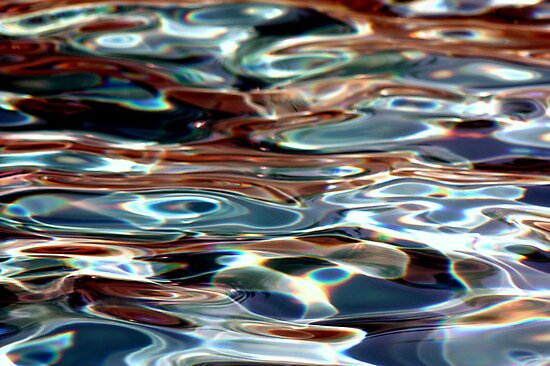
For my visualization of Haroun and the Sea of Stories I have chosen an image of colored water. I chose this image because I felt that it fit in well with the overall message of the story. When I thought about the main point of the story, I kept coming back to the importance of the ocean to storytelling, and how all of the people in the novel worked together to stop Khattam-Shud from destroying the ocean. All of the characters in the novel are extremely different from one another, but they are willing to work together to save their world from destruction. This made me think of how different colors can blend together to make something beautiful. I think that this image reflects the diversity present in the story, as well as the importance of the ocean, which is the most important place in the story. Without the storytelling waters, there will be no stories to tell, which would change the world forever, and make it a much more negative place. I also chose this image of water because it has a mystical quality to it. If you look at the image long enough, you begin to question whether or not it is really water at all, or something completely different. This represents the different worlds present in the novel, and how Haroun and his father are able to go in between them. I think that for such a complex novel, there needs to be a complex representation that is also simple at the same time. This picture is so complex because of the different colors of the water and how the light plays off of them, but at the same time it is extremely simple. Water is one of the most basic elements of life, and without it no one could survive. The storytelling waters are absolutely essential to Haroun's world, which is why I think this image works perfectly.
When I chose to use Haroun and the Sea of Stories as my book for this project, I did so because of the different ways it related to the principles discussed in Calvino's memos. I think the book relates to the principle of lightness in the way that the book reads. The language is simple and light, which makes the overall story seem light as well. The story is also happy, even when the situations the characters are in become dangerous. This overall happiness helps create a light atmosphere when reading the story. I feel that the principle of quickness is found in the novel in the way that the story is delivered. There are no points in the story where the plot lags to explain places or events in great detail. This keeps the story moving quickly, and makes the point of the story more evident. There is also a rhythmic feeling to the story, which is a trait that Calvino identified with the principle of quickness. Calvino's third principle of exactitude can be seen in the novel by the way that it is constructed. The novel takes the reader on a journey, and is planned out into the structure of a story that a storyteller might tell to an audience. The images used in the story are also clear and memorable, which helps pull the reader into the story. Visibility is the principle that I found the most important to the novel. The images used in the story are very creative, and make the reader wonder where they came from. The fact that the images are created by combining real people and places with the imagination of the author makes the story extremely complex. This requires the reader to dig deep to find the true meaning of all the images in the text. The complex images in the text also tie in with the multiplicity of the text. By pulling in different images and contexts, Rushdie created a novel that works as a sort of hyper-novel.

No comments:
Post a Comment